Second World War
The Second World War, like the First, started in Europe and assumed the character of a world war. In spite of the fact that Western countries had acquiesced all the aggressions of Japan, Italy and Germany from the invasion of Manchuria to the annexation of Czechoslovakia, the fascist countries’ ambitions had not been satisfied.
These countries were planning another redivision of the world and thus had to come into conflict with the established imperialist powers.
- The Western policy of diverting the aggression of the fascist countries towards the Soviet Union failed with the signing of Soviet German Non-Aggression Pact.
- Thus, the war began in Europe between the fascist countries & the major West European Powers – Britain and France.
- Within a few months it became a world war & ultimately involved almost every country in the world.
The Invasion of Poland
After the First World War, East Prussia had been separated from the rest of Germany. The city of Danzig which separated East Prussia from the rest of Germany had been made a free city independent of German control. Hitler had demanded the return of Danzig to Germany, but Britain refused to accept this demand.
- On 1 September 1939 German armies marched into Poland.
- On 3 September Britain & France declared war on Germany.
- Thus the invasion of Poland marked the beginning of the Second World War.
- German armies completed the conquest of Poland in less than three weeks as no aid reached Poland.
- In spite of declaration of war from Britain & France, however, there was little actual fighting for many months.
- Therefore, the war during this period from September 1939 to April 1940 when Germany invaded Norway and Denmark is known as the ‘phoney war’.
Soon after the German invasion of Poland, the Soviet Union attacked eastern Poland and occupied the territories which were earlier in the Russian empire. It is believed that this was a part of the secret provisions of the Soviet German Non-Aggression Pact. In 1940, the Baltic States of Latvia, Estonia and Lithuania which had become independent after the First World War were also occupied by the Soviet Union. In November 1939, Soviet Union also went to war against Finland.
Conquest of Norway, Denmark, Holland, Belgium and France
- Germany launched her invasion of Norway and Denmark in April 1940 and within three weeks completed the conquest of these two countries.
- In Norway, the German invaders were helped by Quisling, leader of Norway’s fascist party, who set up a puppet government in Norway under German occupation.
- The very name ‘Quisling’ has come to mean a traitor who collaborates with the invaders of his country.
- In early May began the invasion of Belgium and Holland which was completed before the end of May.
- Soon the German armies marched into France and by 14 June 1940, the capital city of Paris had fallen into German hands almost without a fight.
- In the meantime, Italy also joined the war on the side of her ally, Germany.
- On 22 June 1940, French government surrendered & signed a truce with Germany acc. to which about half of France was occupied by Germany.
The remaining part remained under the French government which required disbanding the French army & providing for the maintenance of the German army in France. French government which had surrendered to Germany ruled from Vichy. With the defeat of France, Germany became the supreme power of Europe. The war conducted by Germany with great speed, known as blitzkrieg which means a ‘lightning war’.
The Battle of Britain
- Britain was the only major power left in Europe after the fall of France.
- Germany thought that Britain would surrender soon as she was without any allies in Europe.
- German air force began bombing raids on Britain in August 1940 with the aim of terrorizing her into surrender.
- The Royal Air Force of Britain played a heroic role in its defence against air raids & conducted air raids on German territories in retaliation.
- Under the leadership of Winston Churchill, the people of Britain successfully resisted the German air raids.
In the meantime, Italy started military operations in North Africa & also invaded Greece, but the Italian attack in both the areas was repulsed. However, Germany succeeded in capturing the Balkans – Greece, Yugoslavia, Bulgaria and also large parts of North Africa.
German Invasion of Soviet Union
Having conquered almost the entire Europe, except Britain, Germany attacked Soviet Union, despite the Non-Aggression Pact, in June 1941. As Hitler always coveted the vast territory & resources of Soviet Union.
- In the first phase of the war, Germany achieved significant victories.
- Vast areas of Soviet Union were devastated, Leningrad was besieged & German troops were marching towards Moscow.
- However, in spite of the initial German successes, German onslaught was halted.
- The Soviet Union had built up her industrial and military strength.
- She resisted the German invasion heroically & German hopes of a quick victory were thwarted.
With the German invasion of the Soviet Union, a new vast theatre of war had been opened. An important development that followed was the emergence of the British – Soviet – American unity to fight against aggression. Soon after the invasion, Churchill and Roosevelt declared British and American’ support, respectively, to the Soviet Union in the war against Germany and promised aid to her. Subsequently, agreements were signed between the Soviet Union and Britain, and Soviet Union and USA.
Timeline of Second World War
Attack on Pearl Harbour: Entry of USA in World War
- Japan was one of the 3 members of the AntiComintern Pact along with Germany & Italy.
- In Dec 1941, the Japanese, without a declaration of war, conducted a massive raid on American naval base at Pearl Harbor in Hawaii.
- The American Pacific Fleet which was stationed there was devastated.
- The Americans lost 20 warships, and about 250 aircrafts. About 3000 persons were killed. The Americans were completely taken unaware.
- Negotiations had been going on between the Japanese and American governments to settle their differences in Asia & the Pacific.
- The attack on Pearl Harbor in the midst of negotiations showed that the Japanese were determined to conquer Asia and the Pacific.
- With this the Second World War became truly global.
- The United States declared war on Japan and soon after Germany and Italy declared war on the United States.
- Following the US entry into the war, many countries in the America joined the war against Germany, Italy and Japan.
The Japanese achieved significant victories in the war in Asia. Within six months of the attack on Pearl Harbor, they conquered Malaya, Burma, Indonesia, the Philippines, Singapore, Thailand, Hongkong and numerous other areas. By the middle of 1942, the fascist powers had reached the peak of their power. After that the decline began.
The Battle of Stalingrad
In January 1942 the unity of the countries fighting against the fascist powers was cemented. Representatives of 26 nations, including Britain, the United States and the Soviet Union, signed a declaration, known as the United Nations Declaration. The signatories to this Declaration resolved to utilize all their resources to pursue the war until victory was achieved & to cooperate with one another against the common enemy and promised not to have a separate peace treaty.
- One of the most important turning points in the world war was the Battle of Stalingrad.
- In November and December 1941, the German advance on Moscow met with stubborn resistance and the invasion was repulsed.
- Germany then launched an offensive in southern Russia.
- In August 1942, the German troops reached the outskirts of Stalingrad. Civilian population of Stalingrad joined the soldiers in the defence of the city.
- In February 1943, German officers and soldiers surrendered. In all, Germany had lost about 3 lakh men in this battle.
- This battle turned the tide of the war.
Opening of Second Front
- Fascist countries began to suffer reverses. Japan failed to capture Australia & Hawaii.
- The destruction of the fascist army in North Africa was also a major turning point in the war.
- In July 1943, British and American troops occupied Sicily. Many sections in Italy had turned against Mussolini.
- He was arrested and a new government was formed. This government joined the war against Germany.
- However, German troops invaded northern Italy & Mussolini, who had escaped with the help of Germans, headed a Pro German government there.
- Meanwhile, British & American troops entered Italy and a long battle to throw the Germans out of Italy followed.
- The Soviet Union was attaining significant victories against Germany & had already entered Czechoslovakia & Rumania which had been under German occupation.
On June 1944, British and American troops landed on the coast of Normandy in France. The opening of this front played a very crucial role in the defeat of Germany. This is known as the opening of the ‘Second Front’. Soviet ‘Union had been demanding the opening of the second front for long, as this would compel Germany to fight on other fronts also & would thus hasten the defeat of Germany. From this time onwards the German armies were on the run on all fronts.
End of the War in Europe
- After June 1944, German armies had to face the forces of Allies from three directions.
- In Italy, the British and American troops were advancing.
- Northern & western France and the city of Paris had been freed and the Allied troops were moving towards Belgium and Holland.
- On the eastern front, the Germans were facing a collapse.
The Soviet army from the east and other Allied troops from the west were closing on Germany. On May 1945 the Soviet armies entered Berlin. Hitler committed suicide & on 7 May 1945 Germany unconditionally surrendered.
Nuke Attack on Japan
- After the defeat of Germany, the war in Asia continued for another three months.
- Britain & USA had launched successful operations against Japan in the Pacific, the Philippines and Burma.
- In spite of serious reverses, however, Japanese were still holding large parts of China.
- On 6 August 1945, an atom bomb, the deadliest weapon developed during the war, was dropped on the Japanese city of Hiroshima.
- With one single bomb, the city of Hiroshima was obliterated.
- Another atom bomb was dropped on the city of Nagasaki on 9 August 1945. The city was destroyed.
- In the meantime, the Soviet Union had declared war on Japan and started military operations against Japanese forces in Manchuria and Korea.
On 14 August Japan conveyed its acceptance of the Allied demand to surrender but the actual surrender took place on 2 September 1945. With the Japanese surrender, the Second World War came to an end.
Damage Caused by the World War
- The Second World War was the most destructive war in history.
- The destruction caused by the war in terms of human lives has no precedent in history.
- Over 50 million people perished in the Second World War.
- Of them about 22 million were soldiers and over 28 million civilians.
- Some countries lost a large percentage of their population for example, Poland, Soviet Union, Germany.
- Besides the human losses, the economy & material resources of many countries were badly damaged.
- Many ancient cities were almost completely destroyed.
- Many new weapons of destruction were devised and used in the Second World War.
- The most dreadful of these was the atom bomb.
Brutality by Fascists Countries
- The fascists converted a large part of Europe into a vast graveyard and a slave camp.
- Inside Germany and in those parts of Europe which came under German occupation before and during the war, Jews were picked up and six million of them were exterminated.
- Millions of people were transferred to what are known as concentration camps and killed.
- Many of these camps were death camps where new ways of killing people were introduced.
- People were burnt in gas chambers.
- There were mass massacres Prisoners were made to dig mass graves, were shot and then buried in those graves.
- The kinds of tortures & brutalities that the fascists, particularly German Nazis, perpetrated had no precedent nor did the mass scale on which they were practiced.
- Many of these brutalities came fully to light when Germany lost the war, after the discovery of places of mass murders and from the descriptions of those in the concentration camps who had survived.
- The atrocities committed by the Japanese in countries occupied by them were no less brutal. Inhuman medical experiments were conducted by Japanese on human beings.
Use of Atom Bomb by USA
The atom bomb was first devised in the United States during the Second World War. The project to develop the bomb was taken up when a number of scientists, suspecting that the Nazi Germany was developing the atom bomb, approached the US government. The atom bomb was first tested in July 1945. By then, Germany had already surrendered.
- Many of those who had helped in its development appealed to the US government not to use it against Japan against whom the war was still continuing.
- They also warned of the danger of starting a race in the production of atomic weapons if the atom bomb was used against Japan.
- However, the government of the United States used the atom bombs against the Japanese cities of Hiroshima and Nagasaki.
- The government of the United States justified the use of the atom bomb on the ground that it brought the Second World War immediately to a close and thus helped to save human lives which would have been lost if the war had continued.
After the defeat of Germany and the ending of the war in Europe, Japan was not in a position to continue the war and her capitulation was a matter of days.
Some scholars hold the view that main reason for using the atom bomb was to establish the superiority of USA in the world after the war as at that time it alone possessed these weapons.

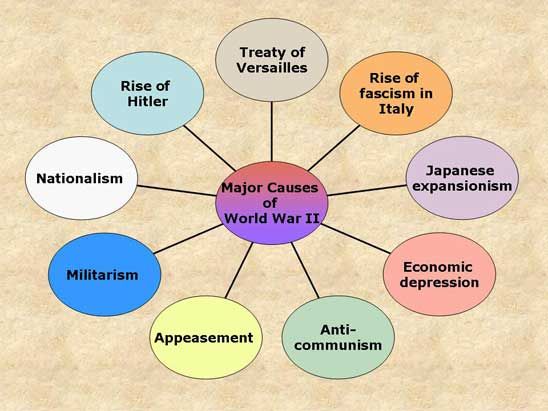

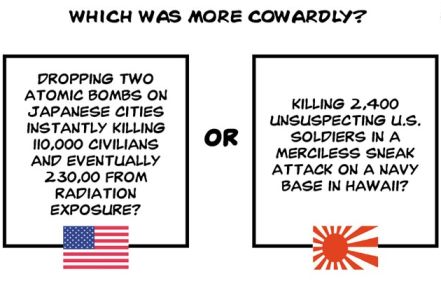
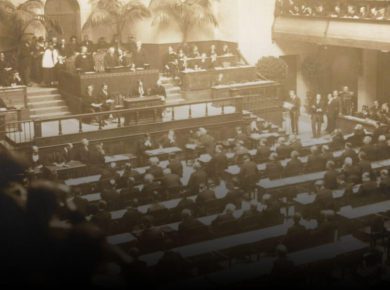

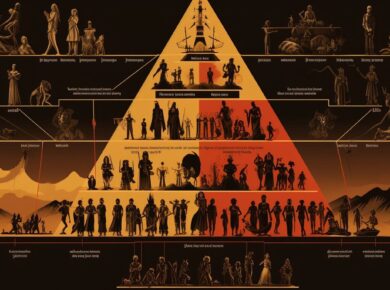
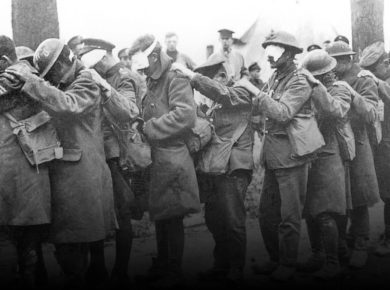
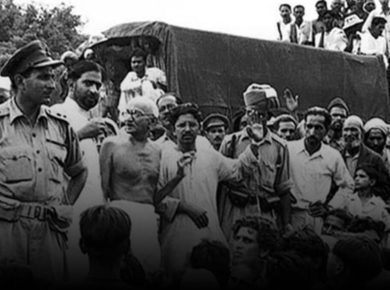
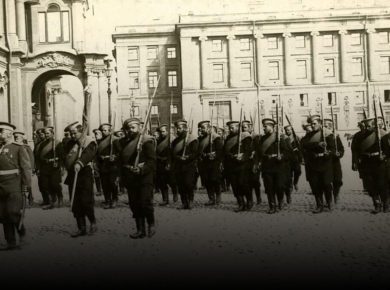
1 comment
thankyou very much to share the knowledge.